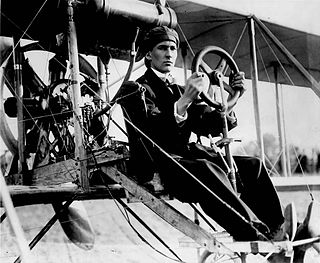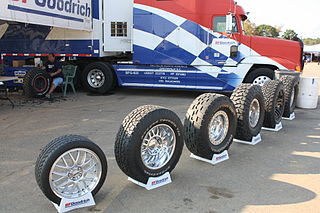Frank Schoeber (April 21, 1891 - July 19, 1970) was one of the pioneers of aviation.
Frank Schoeber (April 21, 1891 - July 19, 1970) was one of the pioneers of aviation.
Frank was born in New York City on April 21, 1891. He soloed a plane in August 1912 in Mineola, New York. He worked up until 1923 for some of the big plane builders... Curtiss of Hammondsport, Lawson Airlines, Navy NC-4 and the Barling bomber for the Air Force. He had a stroke in 1961. He died on July 19, 1970, at the age of 79 in Cape May, New Jersey.
Frank describes his journey in his memoirs... "In 1908, at the age of 17, I started to build models after visiting Morris Park where Aeronautical Society members were building and trying out their inventions. In February, 1910, I went to Boston with the Church Model Airplane Company of Brooklyn. At this point, I was just a visitor. In June, I participated in a competition at the 22nd Regiment Armory in NYC and won the Worlds Model Airplane record with a flight of 215’ 6”. The model flyers formed the N.Y. Model Airplane Club of which I was listed as the first Vice President.
In 1911, I worked around Mineola as a freelance mechanic to learn more about airplane construction.
In 1913, I got a letter from Glenn Curtiss, in Hammondsport, to come work for him. The job they gave me was assembling the June Bug, the first tractor plane they were going to build. When that was finished, I was put in the boat department where I assembled E boats for Steve MacGordon and Bill Thaw.
In 1915, at the age of twenty-four, I went back to models again and started working on a compressed air motor for model airplanes. I had an assistant in Rudy Fink, and we developed several types of motors and planes which were the first in the United States holding records until the first gas motors appeared.
Alfred W. Lawson, Editor of Aircraft Magazine, called me in 1917 asking me if I would like to go to Green Bay, Wisconsin, to build planes for the airforce. We built the first training plane and Lawson flew it, but it was not accepted by the government. We then designed a second plane which was a beauty, far ahead of anything that was built at the time. It flew beautifully and handles with ease, but the war stopped before the plane was accepted.
The engineers had been working for several months, before the end of the war, on a post war Curtiss. It was the first 22-passenger cabin airliner built and flown in the United States. In September 1919, it flew from Milwaukee, Wisconsin to Bolling Field in Washington, D.C. on which flight I was a passenger with ten others. I was working for Curtiss Airplane Company in Garden City at the time and got a few days leave to be with the boys from Lawson and make the flight to Washington D.C.
In December 1919, I got a telegram from Lawson again. He wanted me back to help build a new Airliner, much larger and with three Liberty motors. It took almost a year to complete and was wrecked on its trial flight.
One day I got a call from John Carisi, who was supervising the Barling Bomber job in Hasbrouck Heights, to take charge of the wing building job. In 1923, we shipped the Bomber to Dayton for assembly and to test fly. I was one of five sent to Dayton to assemble and after several months of changes it was done.
I found another job with Clarence Chamberlain rebuilding some of his surplus planes he bought after the war; Sop. Camels and Spads which he used for photography work. While working there I met Red Noyes who was flying for Bill Davis some of the surplus DH6 which were equipped with OX5 Curtiss Motors. He asked me one day if I ever flew and I told him I was an Early Bird. He asked me to come along on one of his joyrides and he would let me fly the plane after we were in the air. Not being acquainted with the tractor plane, I kept climbing too much and flying around in circles. When we came down, he landed the plane and looked me over. Come to find out that the cloth covering started to come loose at the trailing edges which had pulled away from age. I worked for Chamberlain about 8 months when things got slow, so I quit airplane work for good and got into the auto work.
I got a job as body man for a Ford dealer. That lasted about a year when a tire man down the street offered me a better job vulcanizing and rebuilding tires. He knew I knew something about building radios and it wasn't long after that he asked me about manufacturing our own radios to sell to the tire customers. I ended up buying a Radio Shop which he owned and ran in Englewood, NJ."
Upon retirement he continued to build and fly his model planes at the Cape May airport where he sometimes took his granddaughters to watch.
In recognition of his solo flight, he received a bronze plaque from the Early Birds of Aviation, of which he was a member.

The Wright brothers, Orville Wright and Wilbur Wright, were American aviation pioneers generally credited with inventing, building, and flying the world's first successful motor-operated airplane. They made the first controlled, sustained flight of a powered, heavier-than-air aircraft with the Wright Flyer on December 17, 1903, 4 mi (6 km) south of Kitty Hawk, North Carolina, at what is now known as Kill Devil Hills. The brothers were also the first to invent aircraft controls that made fixed-wing powered flight possible.

The Curtiss JN "Jenny" was a series of biplanes built by the Curtiss Aeroplane Company of Hammondsport, New York, later the Curtiss Aeroplane and Motor Company. Although the Curtiss JN series was originally produced as a training aircraft for the US Army, the "Jenny" continued after World War I as a civil aircraft, as it became the "backbone of American postwar [civil] aviation".

Glenn Hammond Curtiss was an American aviation and motorcycling pioneer, and a founder of the U.S. aircraft industry. He began his career as a bicycle racer and builder before moving on to motorcycles. As early as 1904, he began to manufacture engines for airships. In 1908, Curtiss joined the Aerial Experiment Association, a pioneering research group, founded by Alexander Graham Bell at Beinn Bhreagh, Nova Scotia, to build flying machines.

A seaplane is a powered fixed-wing aircraft capable of taking off and landing (alighting) on water. Seaplanes are usually divided into two categories based on their technological characteristics: floatplanes and flying boats; the latter are generally far larger and can carry far more. Seaplanes that can also take off and land on airfields are in a subclass called amphibious aircraft, or amphibians. Seaplanes were sometimes called hydroplanes, but currently this term applies instead to motor-powered watercraft that use the technique of hydrodynamic lift to skim the surface of water when running at speed.

Curtiss Aeroplane and Motor Company was an American aircraft manufacturer originally founded in 1909 by Glenn Hammond Curtiss and Augustus Moore Herring in Hammondsport, New York. After significant commercial success in its first decades, it merged with the Wright Aeronautical in 1929 to form Curtiss-Wright Corporation.

The NC-4 was a Curtiss NC flying boat that was the first aircraft to fly across the Atlantic Ocean, albeit not non-stop. The NC designation was derived from the collaborative efforts of the Navy (N) and Curtiss (C). The NC series flying boats were designed to meet wartime needs, and after the end of World War I they were sent overseas to validate the design concept.

The Aerial Experiment Association (AEA) was a Canadian-American aeronautical research group formed on 30 September 1907, under the leadership of Dr. Alexander Graham Bell.
This is a list of aviation-related events from 1910:

This is a list of aviation-related events from 1912:
A parasite aircraft is a component of a composite aircraft which is carried aloft and air launched by a larger carrier aircraft or mother ship to support the primary mission of the carrier. The carrier craft may or may not be able to later recover the parasite during flight.

The Douglas XB-19 was the largest bomber aircraft built for the United States Army Air Forces until 1946. It was originally given the designation XBLR-2.

A triplane is a fixed-wing aircraft equipped with three vertically stacked wing planes. Tailplanes and canard foreplanes are not normally included in this count, although they occasionally are.

Blanche Stuart Scott, also known as Betty Scott, was possibly the first American woman aviator.

Glenn Luther Martin was an early American aviation pioneer. He designed and built his own aircraft and was an active pilot, as well as an aviation record-holder. He founded an aircraft company in 1912 which through several mergers amalgamated into what is today known as Lockheed Martin.

BFGoodrich is an American tire company. Originally part of the industrial conglomerate Goodrich Corporation, it was acquired in 1990 by the French tire maker Michelin. Prior to the sale, BFGoodrich was the first American tire manufacturer to make radial tires. It made tires for the then new Winton car from Winton Motor Carriage Company.

Thomas Scott Baldwin was a pioneer balloonist and U.S. Army major during World War I. He was the first American to descend from a balloon by parachute.
Allan Haines Lockheed was an American aviation engineer and business man. He formed the Alco Hydro-Aeroplane Company along with his brother, Malcolm Loughead, that became Lockheed Corporation.

The Curtiss Flying School was started by Glenn Curtiss to compete against the Wright Flying School of the Wright brothers. The first example was located in San Diego, California.
The Loughead Aircraft Manufacturing Company was an American company which designed and built aircraft. The founder, Allan Lockheed, went on to form the similarly named but otherwise unrelated Lockheed Aircraft Company in 1926, which would merge with Martin Marietta in 1995 to form today's Lockheed Martin.

David Hugh McCulloch was an early American aviator who worked with Glenn Curtiss from 1912. Curtiss was a contemporary and competitor to the Wright brothers, Wilbur and Orville, who had made the first flights at Kitty Hawk in 1903. Curtiss won the world's first air race at Reims in France in August 1909, and was now becoming the driving force in American aviation. McCulloch's early work with Curtiss consisted of demonstrating, training and selling Curtiss planes and participating in early developments of flight. He trained the First Yale Unit, and in two consecutive days in 1917, he and several of his pupils from the First Yale Unit made flights that convinced the Navy to bring aircraft aboard ships. Later, McCulloch was co-pilot with Holden C. Richardson and flight commander John Henry Towers of the NC-3, the leader of the three Navy flying boats making the first flight across the Atlantic Ocean.